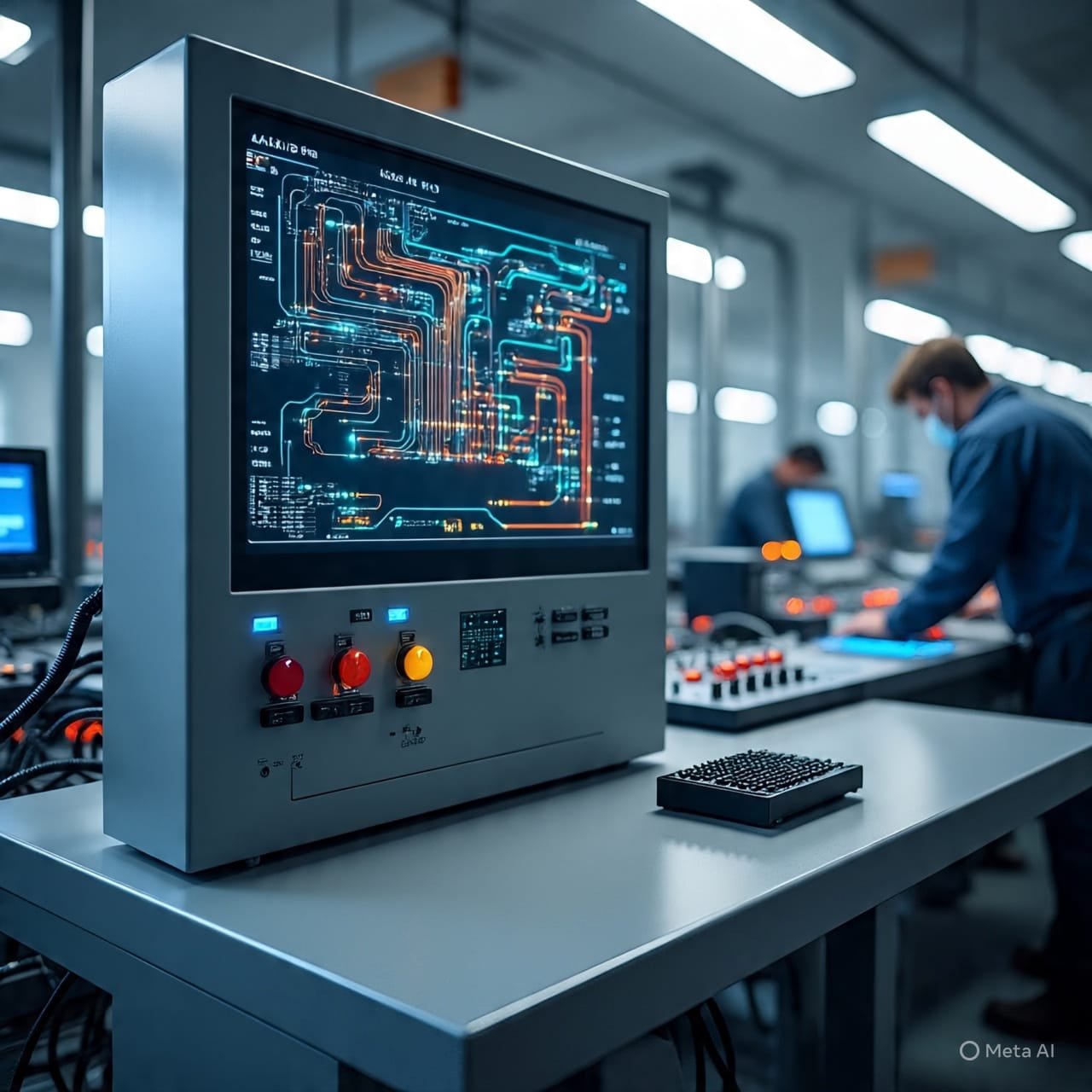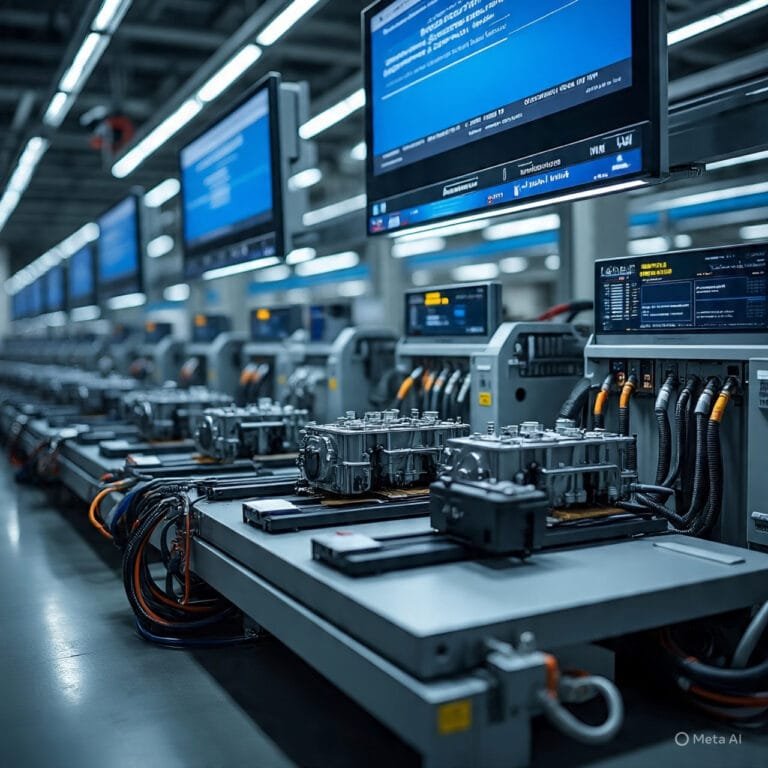How to Choose the Right PLC for Your Application
Selecting the right Programmable Logic Controller (PLC) for an industrial or automation project is a critical step in ensuring smooth, reliable, and efficient operations. With a wide variety of PLC models, configurations, and features available, making the right decision requires careful evaluation of your application needs, system environment, and future expansion possibilities.
In this article, we’ll explore how to choose the most suitable PLC, the key considerations you need to account for, and how models like BMEAHO0412 and BMXP3420102 fit into different industrial environments.
Understanding the Basics of PLCs
What Is a PLC?
A Programmable Logic Controller is a rugged digital computer used for automation of electromechanical processes, such as control of machinery on factory assembly lines, amusement rides, or lighting fixtures. PLCs are designed to handle harsh conditions and offer high reliability for real-time control applications.
Core Functions of a PLC
-
Monitoring input signals from sensors or switches
-
Executing logic-based instructions
-
Controlling outputs to actuators or other devices
-
Communicating with other systems and devices
Key Factors to Consider When Selecting a PLC
Choosing the right PLC requires a balance of technical requirements, budget constraints, and long-term scalability. Here are the main factors to consider:
1. Application Complexity and Size
The complexity of your control process largely determines the type of PLC needed. Simple on/off control might require only a basic unit, while more complex operations involving analog signals, PID control, or communication with other devices may need a more advanced model.
-
Small Applications: Basic PLCs with limited I/O, suitable for compact systems.
-
Medium to Large Applications: Mid- to high-tier models like the BMXP3420102, which offer more processing power, memory, and advanced programming capabilities.
2. Input/Output (I/O) Requirements
Understanding your system’s I/O needs is crucial:
-
Digital Inputs/Outputs: For on/off devices like switches, motors, and lights.
-
Analog Inputs/Outputs: For variable signals such as temperature, pressure, or speed.
-
Specialty Modules: Some applications need high-speed counters, PWM outputs, or temperature sensing.
Models like BMEAHO0412 are often selected for their flexibility and modular I/O expansion capabilities, making them suitable for applications where future scaling is anticipated.
3. Communication Capabilities
Modern industrial systems are interconnected, requiring PLCs to communicate with other devices:
-
Serial Communication (RS-232, RS-485)
-
Ethernet/IP, Modbus TCP/IP, PROFINET
-
Remote I/O and SCADA Integration
When choosing a PLC, verify it supports the required protocols. For example, a PLC like BMXP3420102 typically includes built-in Ethernet ports and supports multiple industrial communication standards.
4. Environmental Conditions
The environment where your PLC operates impacts your choice:
-
Temperature Range
-
Vibration/Shock Resistance
-
Ingress Protection (IP Rating)
-
Mounting Type (DIN rail, panel, etc.)
Harsh industrial environments may require a more robust PLC enclosure or additional protection.
Programming Capabilities and Software Support
Programming Languages
Most PLCs support standard IEC 61131-3 languages:
-
Ladder Logic (LD)
-
Structured Text (ST)
-
Function Block Diagram (FBD)
-
Sequential Function Chart (SFC)
Choose a PLC that supports the language best suited for your engineering team’s skillset and project needs.
Software Integration
PLC programming software should offer:
-
Easy-to-use interface
-
Simulation and debugging tools
-
Version control and documentation features
-
Compatibility with your operating system
Ensure that the PLC you select comes with reliable programming tools that match your technical requirements.
Evaluating BMEAHO0412 and BMXP3420102 for Your Application
Let’s briefly explore how models like BMEAHO0412 and BMXP3420102 can meet different industrial needs.
BMEAHO0412 – Modular Flexibility
The BMEAHO0412 is typically used in modular PLC systems where customized I/O configurations are needed. It supports multiple I/O channels and can be integrated with other modules in a rack-based system. This makes it ideal for:
-
Factory automation
-
Energy management systems
-
Material handling applications
If your project involves expansion or mixed signal processing, this model offers a great deal of flexibility.
BMXP3420102 – Powerful Processing for Mid-Range Applications
The BMXP3420102 is designed for medium-scale applications that demand robust processing capabilities. It often comes with features such as:
-
High-speed processing
-
Advanced communication ports
-
Multiple task handling
It is suitable for:
-
Packaging lines
-
Conveyor systems
-
Building management automation
Its balance between performance and cost makes it a popular choice for a wide range of control tasks.
Future-Proofing Your Investment
When selecting a PLC, think long-term:
-
Scalability: Can you add more I/O or functionality later?
-
Software Upgrades: Is the programming software regularly updated?
-
Support and Documentation: Is technical support readily available?
Even if your current system is small, choosing a PLC that can scale up (like BMEAHO0412) helps you adapt to future changes without a complete redesign.
Conclusion
Selecting the right PLC for your application is more than just picking a unit off the shelf. You need to evaluate your control system’s current needs, environmental constraints, I/O requirements, and future plans. Whether your project is small-scale or industrial-grade, models like BMEAHO0412 and BMXP3420102 offer solid starting points based on flexibility and performance.
By carefully considering all relevant factors—hardware, communication, programming, and scalability—you’ll ensure that your automation project runs smoothly and delivers long-term value.






